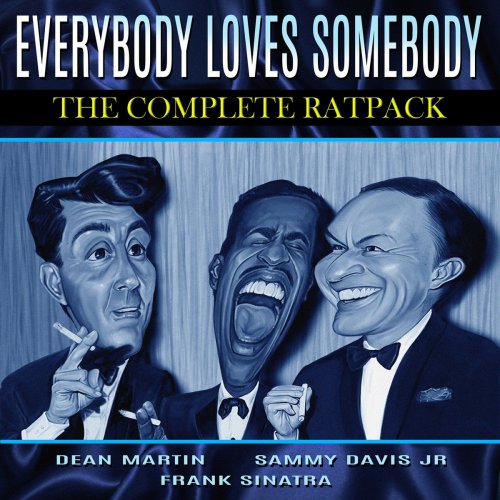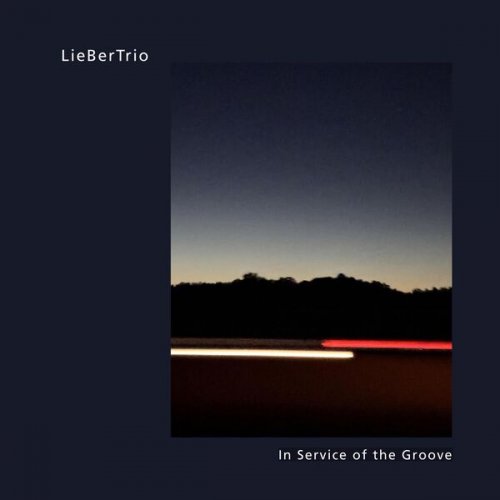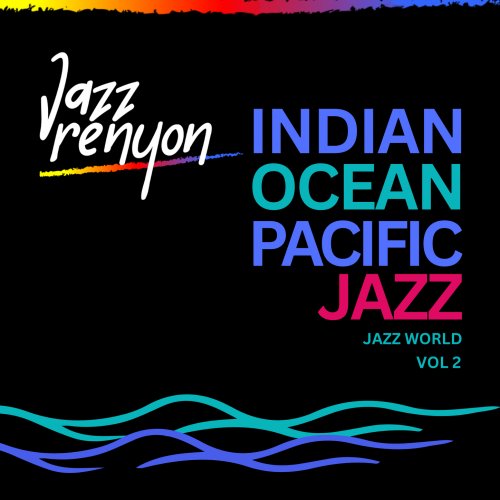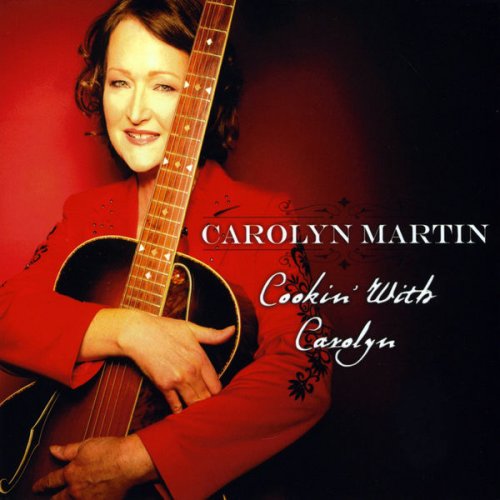Carol Madalin, English Chamber Orchestra, Alfredo Bonavera - Martucci: La Canzone dei Ricordi - Respighi: Il Tramonto (1988)
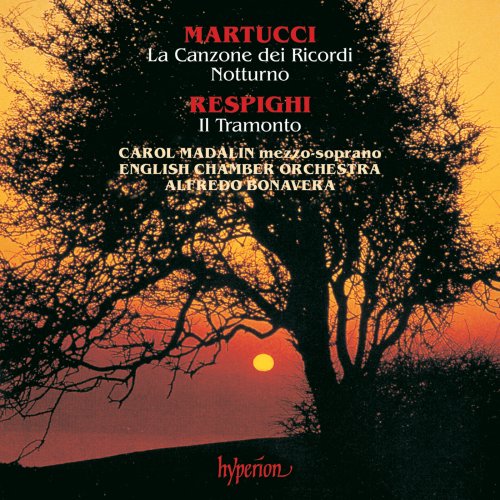
Artist: Carol Madalin, English Chamber Orchestra, Alfredo Bonavera
Title: Martucci: La Canzone dei Ricordi - Respighi: Il Tramonto
Year Of Release: 1988
Label: Hyperion
Genre: Classical
Quality: flac lossless (tracks) +Booklet
Total Time: 00:55:46
Total Size: 195 mb
WebSite: Album Preview
TracklistTitle: Martucci: La Canzone dei Ricordi - Respighi: Il Tramonto
Year Of Release: 1988
Label: Hyperion
Genre: Classical
Quality: flac lossless (tracks) +Booklet
Total Time: 00:55:46
Total Size: 195 mb
WebSite: Album Preview
01. La Canzone dei Ricordi: I. No… svaniti non sono i sogni
02. La Canzone dei Ricordi: II. Cantava 'l ruscello la gaia canzone
03. La Canzone dei Ricordi: III. Fior di ginestra, io sono lo scolar
04. La Canzone dei Ricordi: IV. Su 'l mar la navicella
05. La Canzone dei Ricordi: V. Un vago mormorío mi giunge
06. La Canzone dei Ricordi: VI. A 'l folto bosco, placida ombría
07. La Canzone dei Ricordi: VII. No… svaniti non sono i sogni
08. 4 Short Pieces for Piano, Op. 70: I. Notturno
09. Il tramonto, P. 101
Giuseppe Martucci (born in Capua in 1856, died in Naples in 1909) lived a short but intense life. He was a pianist of international fame, much admired by Liszt and Rubinstein, as well as a great conductor, a composer, and the Dean of the Liceo Musicale di Bologna where he also taught composition.
Oddly enough, Martucci’s name is mostly associated with a dramatic episode that occurred in Bologna in 1932. To commemorate the twentieth (actually the twenty-third) anniversary of his friend’s death, Toscanini elected to conduct an all-Martucci programme divided between two evenings. Rehearsals went well and dignitaries from Rome were expected to attend this event. But word spread that the maestro would not perform the Fascist Anthem at the opening ceremony, a fact that provoked the ire of the officials and members of the party. A terrible riot ensued during which Toscanini was hurt—an event that hastened his exile from Italy.
Two of the composers that Martucci most promoted as a conductor were his giant contemporaries Brahms and Wagner (it was he who introduced Tristan und Isolde in Italy). No wonder then that his music should be influenced by theirs; Brahms for strictness of form mostly, and Wagner for colourful orchestration and the particular use of chromaticism and appoggiaturas. Nonetheless, such influences on Martucci’s music certainly do not impair its originality, its personality, or its definite Italian flavour. What does make Martucci’s output an oddity is the fact that this Italian composer wrote no operas (a well-established Italian tradition) but completed two superb large-scale symphonies and several Lieder—both very un-Italian means of expression. He also wrote a piano concerto, several short pieces for orchestra, many transcriptions and a great amount of chamber and instrumental music, mostly for the piano.
The delicate Notturno is the first of Four Short Pieces for Orchestra Op 70. It has been the most performed of Martucci’s scores. Originally written for the piano in 1888, the orchestral transcription readily eclipsed the first version, giving it richer colours and contrasts. It is a poetic and communicative piece, more so than any other of Martucci’s work.
La Canzone dei Ricordi (‘The Song of Remembrance’) bears no opus number, but we know that Martucci was working on it from 1886. It is interesting to note that Mahler had then just completed his Songs of a Wayfarer, while his other song cycles were to come much later. It must also be said that to compose a cycle for voice and orchestra was an act of audacity in nineteenth-century Italy, where the main output for the voice was concerned almost solely with the stage and where vocal chamber music was neglected.
Although divided into seven parts, La Canzone dei Ricordi presents an admirable homogeneity and unity of inspiration. It expresses nostalgic dreams, regrets of days and things long gone. The first section can be considered as an introduction: the dreamer recalls … It is as delicate in its inspiration as in its orchestration. The second section evokes the colourful song of a stream: rippling muted strings suggest the continuous murmur of water, and playful woodwinds the soft breeze. The third, twice interrupted by the same refrain, is a serenade. Pizzicato strings and lively arabesques on the clarinet allude to a strumming guitar. The fourth is a sort of barcarolle portraying a little boat as it drifts away upon the sea, while Halcyons soar in the sky and Sirens sing mysterious songs. The fifth relates how, for a brief moment, the murmur of the breeze carries back lost illusions and deceptive hope for love. The sixth part is the longest and starts in a restless and sombre mood: the woods were witness to betrayed love. There is a sudden moment of brightness when a calmer section follows, taking over the melody stated by the orchestra at the very beginning of the piece. This is a song of regret and, at the same time, of thankfulness. The seventh part concludes the cycle in the same way it began, as the dreamer visualizes once more those lost days of love.
The relationship between Martucci and Respighi was one of teacher and pupil. Born in Bologna in 1879, Respighi frequented its Liceo Musicale and attended Martucci’s composition class from which he eventually graduated. In the meantime he also spent a brief but fruitful period studying with Rimsky-Korsakov. If the latter had a great influence on Respighi’s handling of the orchestral palette, under Martucci he was able to develop his gift for easy-flowing melody, which is the stamp of genuine Italian style. His output was considerable: chamber, vocal and symphonic music, several symphonic poems, transcriptions, concertos and, of course, operas.
In setting to music a poem by Shelley one would expect from the composer an outburst of exalted romanticism. Not so. Respighi was keenly aware of the predicament that the musical world faced at the turn of the century. The Verdian melodrama was giving way to the Verismo and Wagner’s influence was still considerable, while new musical trends were coming in from France and from Russia. Respighi observed, pondered, and gradually emerged as a composer in his own right.
Respighi composed Il Tramonto (‘The Sunset’) in 1918, two years after his first great achievement, The Fountains of Rome. It was a success from the start. It is written for mezzo-soprano and string quartet (with the addition of a double-bass part) or string orchestra, and it was in the latter form that it was premiered in Rome at the Accademia di Santa Cecilia, with Bernardino Molinari conducting and Chiarina Fino Savio, to whom the work is dedicated, singing the solo part.
The whole work is pure musical poetry, intense in its expressiveness, crystalline yet colourful in its instrumentation, and delicate in its harmonies. But whether the mood is tender, contemplative, joyful or sad, the composer’s imagination never strays from the links of the basic conception. The main idea is masterfully unfolded and moulds the music to the very end.
The link between the two vocal works presented here is their obvious craftsmanship and immediate power of captivation. Both are written by masters of the genre; they both offer easy-flowing, yet never banal, melodies, and they both tell of forsaken love—one through betrayal, the other through death.
![Sibel Köse Septet - In Good Company (2025) [Hi-Res] Sibel Köse Septet - In Good Company (2025) [Hi-Res]](https://www.dibpic.com/uploads/posts/2025-12/1765846644_uizwujac4ht2d_600.jpg)
![Zbigniew Namyslowski Modern Jazz Quartet - Lola (Remastered 2025) (2025) [Hi-Res] Zbigniew Namyslowski Modern Jazz Quartet - Lola (Remastered 2025) (2025) [Hi-Res]](https://www.dibpic.com/uploads/posts/2025-12/1765509687_cover.jpg)
